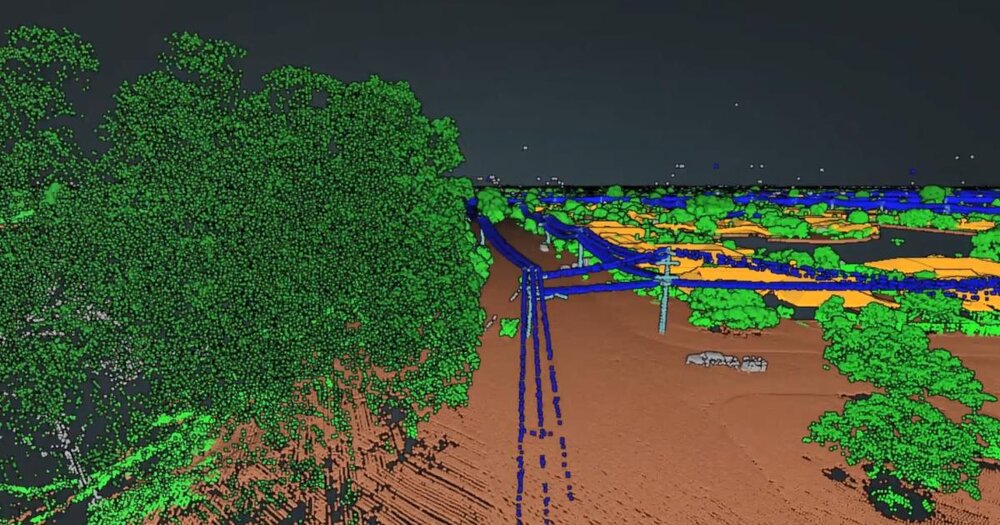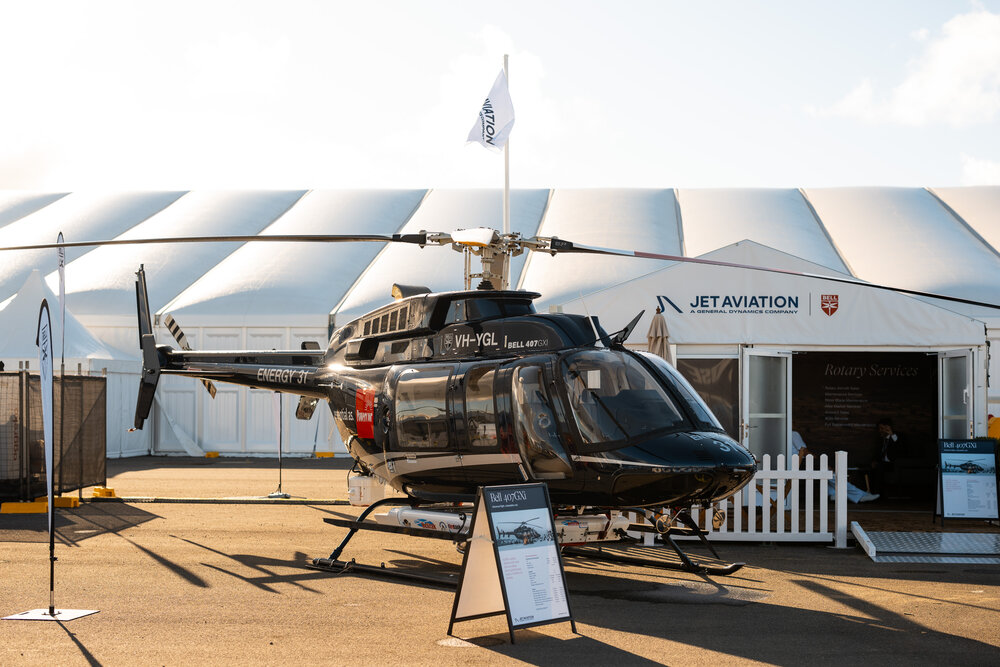The arrival of summer brings sunshine and life – in the form of helicopters – to the skies above Victoria, Australia as the low and steady hum of rotor blades echoes the sweet note of nature’s transition from spring.
For Powercor, a leading power distribution company, summer means one crucial thing: inspecting and maintaining more than 77,000 kilometers (approx. 50,000 miles) of overhead powerlines and the surrounding vegetation to keep homes, businesses, and communities safe and connected.
Due to a generally hot, dry and drought-prone climate, ‘bushfires are an intrinsic part of Australia’s environment’, as Geoscience Australia aptly stated.
According to the Australian Government’s Department of Agriculture, Fisheries and Forestry, a total of 46.9 million hectares (35%) of Australia’s total forest area was burnt over the period 2016 / 17 to 2020 / 21.
Therein lies the challenge, not just for Powercor, but for several other distribution networks across the country’s six states. Is there a way to mitigate and prevent bushfires caused by flammable, overgrown vegetation entangled with powerlines, especially when current inspection programs are falling short?
Traditionally, powerline inspection work is carried out from the ground – crews, slinging binoculars, logging hundreds of hours and thousands of kilometers over rugged terrain in camera-mounted vehicles. However, the limitations of ground-based inspections grew hard to ignore for Powercor as they faced delays, overlooked vegetation risks, struggled with data inconsistencies, and battled difficult terrain while trying to manage the daunting task of inspecting over 750,000 spans (space between power poles) every year.
A Bell 407GXi and two Bell 505s form the backbone of their program that is reshaping the way powerline inspections are conducted in Australia, centered on the belief that improving inspection accuracy is the only way to secure the safety of wider Victoria. Led by Ian Wallace, chief pilot and head of operations, and Ayce Cordy, head of vegetation management, Powercor is the first network provider in the country to implement a fully aerial, LiDAR-based inspection model.
One of many LiDAR scans generated during a routine powerline inspection flight (courtesy of Powercor)
Mounted with RIEGL cameras that have in-built LiDAR sensors, real-time 3D scans are generated as different Powercor crews fly overhead (at about 500 to 1,200 feet above ground level), giving them centimeter-accurate scans of the distance between powerlines and vegetation. The data collected tells Ian, Ayce and their teams where exactly they should be cutting, tracks growth rates and shapes planning for the season ahead, allowing them to pinpoint and prioritize high-risk vegetation before it can even become a threat.
“We were able to complete in eight months with helicopters what used to take 12 months on the ground,” Wallace explains. “That time efficiency gives us a critical head start in planning and clearing vegetation because the annual task of managing the 13 to 15 million trees along our network is enormous.”
The single-engine Bell 407GXi delivers exceptional performance and reliability, setting the highest of benchmarks for its class of light helicopters.
With a powerful Rolls-Royce Model 250-C47E/4 turboshaft engine, extended fuel capacity, IFR capability and smooth four-bladed rotor system, it offers Powercor the endurance and performance needed for long, demanding inspection routes, especially in Victoria where wind and weather can shift in an instant.
Complemented by a set of Bell 505s, Powercor’s fleet is built on the kind of agility and maneuverability only afforded to single-engine aircraft, enabling them to tackle any terrain as they fly, in and out of wind, along a distribution network that constantly meanders, contours the ground, weaves through tight corridors and low-level passes.
Wallace added, “You would think that turbulence is a big concern for us, due to the kind of conditions that we fly in, particularly in mountainous areas, but it rarely is and I put that largely down to the four-bladed rotor head of the Bell 407GXi, which creates stability and gives us peace of mind.”
As Australia faces increasing risk of climate-driven bushfires, Powercor’s aerial inspection program is not just a leap in operational efficiency – it is a frontline defense in safeguarding the lives, land, and infrastructure of Victoria.
About Bell
Thinking above and beyond is what we do. For more than 90 years, we’ve been reimagining the experience of flight – and where it can take us.
We are pioneers. We were the first to break the sound barrier and to certify a commercial helicopter. We were a part of NASA’s first lunar mission and brought advanced tiltrotor systems to market. Today, we’re defining the future of advanced air mobility.
Headquartered in Fort Worth, Texas – as a wholly-owned subsidiary of Textron Inc., – we have strategic locations around the globe. And with nearly one quarter of our workforce having served, helping our military achieve their missions is a passion of ours.
Above all, our breakthrough innovations deliver exceptional experiences to our customers. Efficiently. Reliably. And always, with safety at the forefront.
About Textron
Textron Inc. is a multi-industry company that leverages its global network of aircraft, defense, industrial and finance businesses to provide customers with innovative solutions and services. Textron is known around the world for its powerful brands such as Bell, Cessna, Beechcraft, Pipistrel, Jacobsen, Kautex, Lycoming, E-Z-GO, and Textron Systems. For more information, visit: www.textron.com.
Contact details
Copy link
https://news.bellflight.com/en-US/255618-keeping-victoria-safe-and-powered-one-flight-at-a-time/Related topics
Related news
Shin-Nihon Helicopters Expand Japan's Largest Bell Fleet with Purchase of First Two Bell 429s, Signifying Strength of...
Tokyo, Japan (June 11, 2025) – Bell Textron Inc., a Textron Inc. (NYSE:TXT) company, announced that Shin-Nihon Helicopters has signed a purchase agreement for its first two Bell 429 helicopters, fu...
Bell Announces First Purchase Agreement for SUBARU Bell 412EPX for Commercial Operations in Europe
Latest Bell 412 variant achieves new milestone through order from Austrian operator, Kitz Air
Kestrel Aviation, Operator of Australia's Largest Bell Medium-Twin Fleet, Celebrates 40 Years as Leading Aerial Firef...
Bell Textron celebrates Kestrel Aviation's 40 years of protecting Australian communities with a top-notch Bell medium-twin fleet for aerial firefighting.
Bell Announces First Flight of the Royal Canadian Air Force’s CH-146C MK II Griffon Helicopter
Under the Griffon Limited Life Extension (GLLE) contract, Bell will modernize the RCAF’s CH-146 Griffon Fleet to sustain its capabilities through the 2030s.


